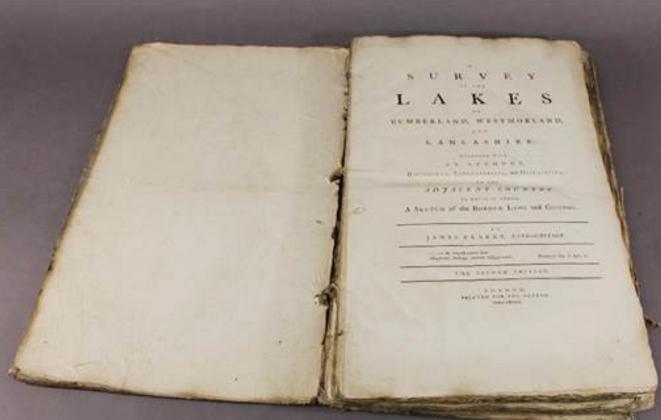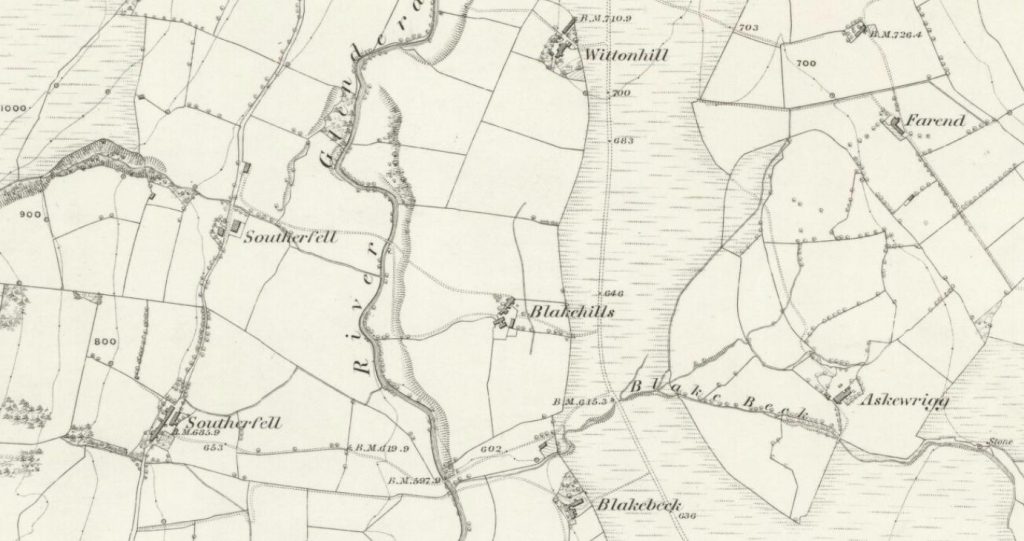The Spectres of Souther Fell 3: James Clarke Speaks August 5, 2016
Author: Beach Combing | in : Modern , trackback
James Clarke wrote a number of late nineteenth-century works on the north west. This comes from one of these: A Survey of the Lakes of Cumberland, Westmorland, and Lancashire published in 1787
Opposite the nine-mile post, on the right hand, is Southerfell; rather smoother than its neighbours, and remarkable for an extraordinary phenomenon, which perhaps can scarcely be paralleled by history, or reconciled to probability: such, however, is the evidence we have of it, that I cannot help relating it, and then my readers must judge for themselves. I shall give it nearly in the words of Mr Lancaster of Blakehills, from whom I had the account; and whose veracity, even were it not supported by many concurrent testimonies, I could fully rely upon. The story is as follows:
This must be the son of William Lancaster from our last account?
On the 23d of June 1744, his father’s servant, Daniel Stricket, (who now lives under Skiddow, and is an auctioneer), about half past seven in the evening was walking a little above the house. Looking round him, he saw a troop of men on horseback riding on Southerfell-side, (a place so steep that an horse can scarcely travel on it at all,) in pretty close ranks, and at a brisk walk. Stricket looked earnestly at them some time before he durst venture to acquaint any one with what he saw, as he had the year before made himself ridiculous by a visionary story, which I beg leave here also to relate: He was at that time servant to John Wren of Wilton-hill, the next house to Blakehills, and sitting one evening after supper at the door along with his master, they saw a man with a dog pursuing some horses along Southerfell-side; and they seemed to run at an amazing pace, till they got out of sight at the low end of the Fell. This made them resolve to go next morning to the place to pick up the shoes which they thought these horses must have lost in galloping at such a furious rate; they expected likewise to see prodigious grazes from the feet of these horses on the steep side of the mountain, and to find the man lying dead, as they were sure he run so fast that he must kill himself. Accordingly they went, but, to their great surprise, found not a shoe, nor even a single vestige of any horse having been there, so much less did they find the man lying dead as they expected. This story they some time concealed; at length, however, they ventured to tell it, and were, (as might be expected) heartily laughed at. Stricket, conscious of his former ridiculous error, observed these aerial troops some time before he ventured to mention what he saw: at length, fully satisfied that what he saw was real, he [56] went into the house, and told Mr Lancaster he had something curious to shew him. Mr Lancaster asked what it was, adding, ‘I suppose some bonefire,’ (for it was then, and still is a custom, for the shepherds, on the evening before St John’s day, to light bonefires, and vie with each other in having the largest.) Stricket told him, if he would walk with him to the end of the house he would shew him what it was. They then went together, and before Stricket spoke or pointed to the place, Mr Lancaster himself discovered the phaenomenon, and said to Stricket: ‘Is that what thou hast to shew me?’ ‘Yes. Master,’ replied Stricket: ‘Do you think you see as I do?’ They found they did see alike, so they went and alarmed the family, who all came, and all saw this strange phaenomenon. These visionary horsemen seemed to come from the lowest part of Souther Fell, and became visible first at a place called Knott: they then moved in regular troops along the side of the Fell, till they came opposite Blakehills, when they went over the mountain: thus they described a kind of curvilineal path upon the side of the Fell, and both their first and last appearance were bounded by the top of the mountain.
This screen capture here is from an 1867 Ordnance Survey 6 inch to the mile map. Click to magnify. Souter Fell is immediately to the west.

Frequently the last, or last but one, in a troop, (always either the one or the other) would leave his place, gallop to the front, and then take the same pace with the rest, a regular, swift walk: these changes happened to every troop, (for many troops appeared,) and oftener than once or twice, yet not at all times alike. The spectators saw, all alike, the same changes, and at the same time, as they discovered by asking each other questions as any change took place. Nor was this wonderful phenomenon seen at Blakehills only, it was seen by every person at every cottage within the distance of a mile; neither was it confined to a momentary view, for from the time that Stricket first observed it, the appearance must have lasted at least two hours and a half, viz. from half past seven, till the night coming on prevented the farther view; nor yet was the distance such as could impose rude resemblances on the eyes of credulity: Blakehills lay not half a mile from the place where this astonishing appearance seemed to be, and many other places where it was likewise seen are still nearer.This account is attested by the signatures of William Lancaster and Daniel Stricket, and dated the 21st day of July 1785. Thus I have given the best account I can procure of this wonderful appearance; let others determine what it was. This country, like every other where cultivation has been lately introduced, abounds in the aniles fabellæ of fairies, ghosts, and apparitions; but these are never even fabled to have been seen by more than one or two persons at a time, and the view is always said to be momentary. Speed tells of something indeed similar to this as preceding a dreadful intestine war. Can something of this nature have given rise to Ossian’s grand and awful mythology? Or, finally, Is there any impiety in supposing, as this happened immediately before that rebellion which was intended to subvert the liberty, the law, and the religion of England; that though immediate prophecies have ceased, these visionary beings might be directed to warn mankind of approaching tumults? In short, it is difficult to say what it was, or what it was not.
Any thoughts on James Clarke or even the rudimentary facts of his biography? drbeachcombing AT yahoo DOT com
A fundamental question is whether Clarke was responding to the Anon (1747) account. Did he even know it?


